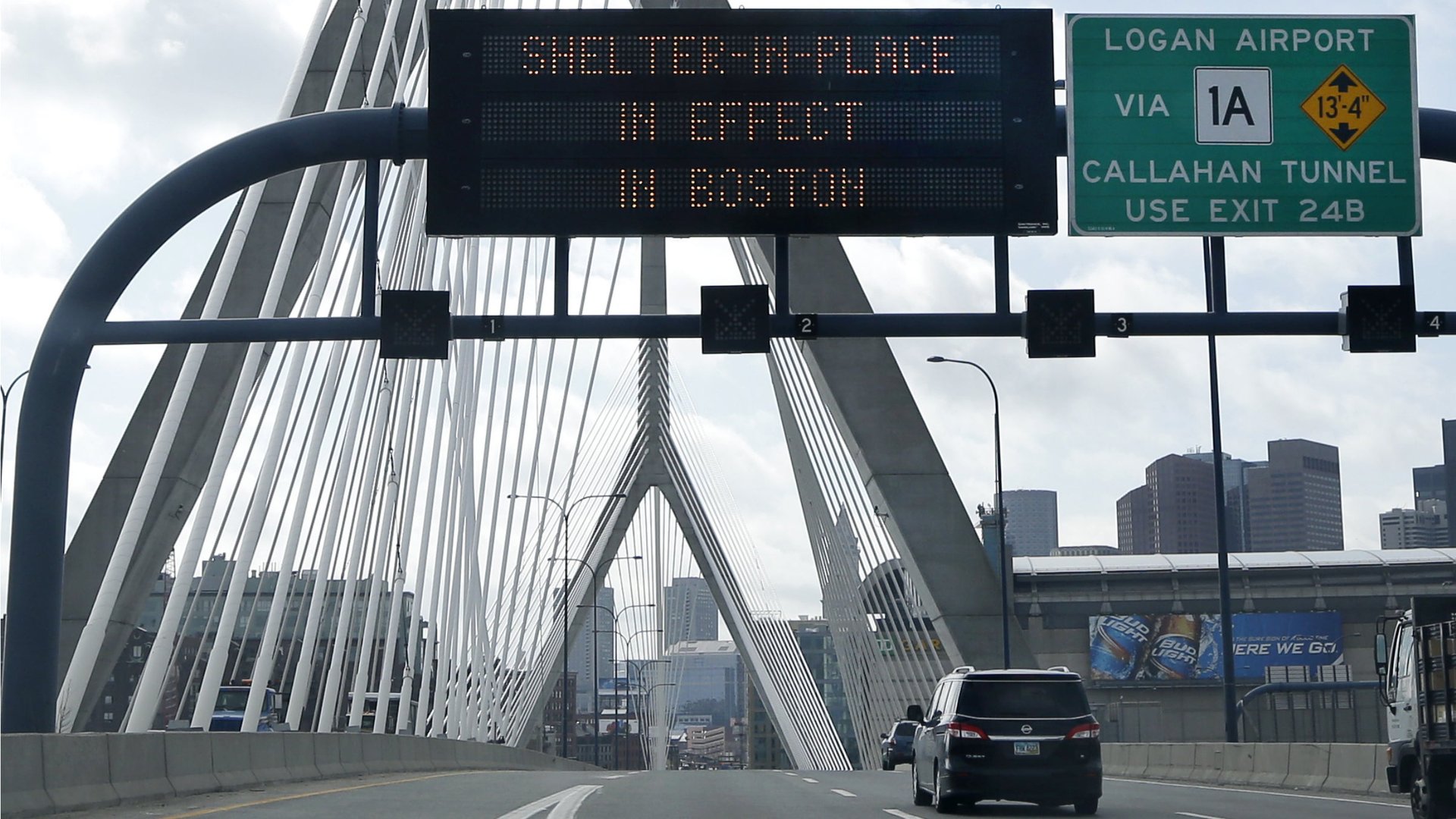In emergencies, the new go-to response is “shut it down”
Massachusetts governor Deval Patrick’s decision to shut down the city of Boston and nearby suburbs—the tenth-largest metropolitan area of the US and the ninth-largest by GDP—may be scary, but Americans are growing ever-familiar with lockdown mode.


Massachusetts governor Deval Patrick’s decision to shut down the city of Boston and nearby suburbs—the tenth-largest metropolitan area of the US and the ninth-largest by GDP—may be scary, but Americans are growing ever-familiar with lockdown mode.
Besides crime and terrorism, weather conditions have also recently prompted closures of mass transit, advisories to stay inside and off the roads. But it’s also politically safer for authorities to outright shut down than deal with the consequences later.
In 2002, two snipers forced Washington, DC, and its suburbs into varying forms of lockdown. The killers struck people as they pumped gas, waited for buses, mowed lawns. Some schools canceled outdoor activities and recess, while others outright closed—amid much controversy. One outraged parent sent this email to a school’s superintendent in Virginia at the time:
most people I know are dismayed and embarrassed by the closing of local schools. Schools are probably the BEST place our children could be at this time. And when they get back, please talk to them forthrightly about what is going on, rather than like after 9/11 when elementary teachers refused to answer children’s earnest questions.
Yet the decision not to shut down—for weather- or crime-related incidents—arguably produces even greater outrage. On Dec. 26, 2010, a massive snowstorm hit New York City—and Mayor Michael Bloomberg was reportedly in Bermuda. The Monday morning after the storm, passengers were stuck for hours on subways without power. More than 400 buses were also stuck across the city.
“Those buses never should have left the garage,” a bus worker told the New York Daily News. “It was a disaster.” Bloomberg took the blame, promising to “do everything we can to make sure it’s better the next time.”
Indeed, what a difference a year (and reams of criticism) can make. In 2011, as Hurricane Irene slammed the eastern seaboard, the mayor forced evacuations of waterfront areas and shut down mass transit. He did the same more than a year later—strategizing long before Superstorm Sandy arrived. Although New York residents were frustrated by the slow return of power and public transportation, the vast majority of New Yorkers rated the city’s response to the storm as “good” or “excellent.”
Earlier this year, when a shooter began targeting police and their families near Los Angeles, police were quick to shut down schools in regions of California where the manhunt was being carried out.
“There’s a lot more of these incidents now. Lockdown has become the standard at a university,” says Robert Wasserman, the chairman of Strategic Policy Institute in West Tisbury, Massachusetts. He’s been in law enforcement for 45 years and is now a security consultant.
In an interview with Quartz, Wasseman said authorities in Boston made the right decision in shutting down swiftly and decisively:
The priority is to get everyone off the streets. …you have a person who has shown the ability to use explosives and has firearms; he killed a police officer; he hijacked a vehicle. That puts the public at risk and we have learned that we have a responsibility to prevent further injury to the public, not just because it is difficult for a person on the run to hide. He is a real danger to the community while on the run.
It’s a different tune from politicians after 9/11. Back then, president George W. Bush famously urged Americans to get on with their lives. ”Get down to Disney World in Florida,” he said. “Take your families and enjoy life, the way we want it to be enjoyed.”
Mindful of the lessons between then and now, Massachusetts governor Patrick was somber on the morning after the Boston Marathon bombing: “The state will be open for business today, but it will not be business as usual.”
Today, that has given way to “better safe than sorry.”